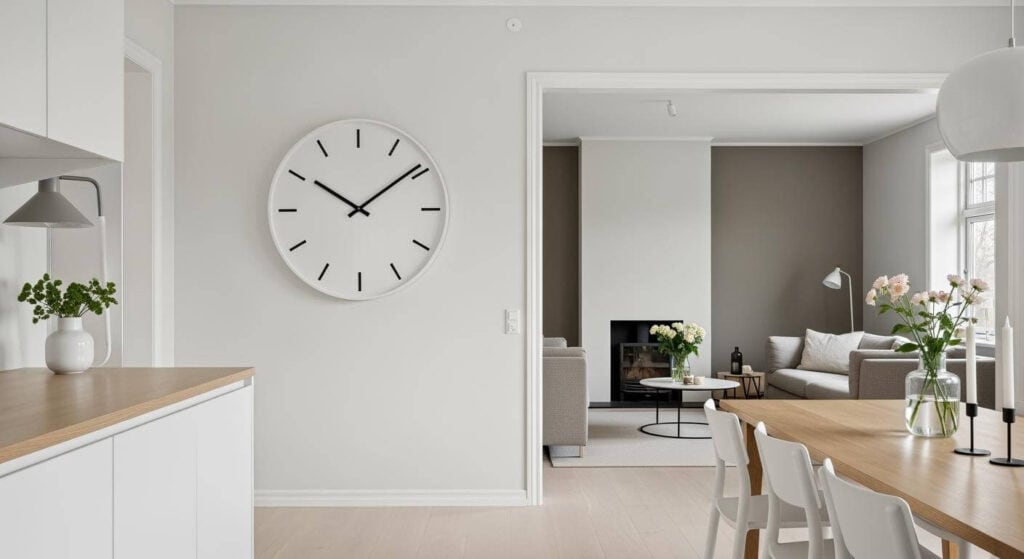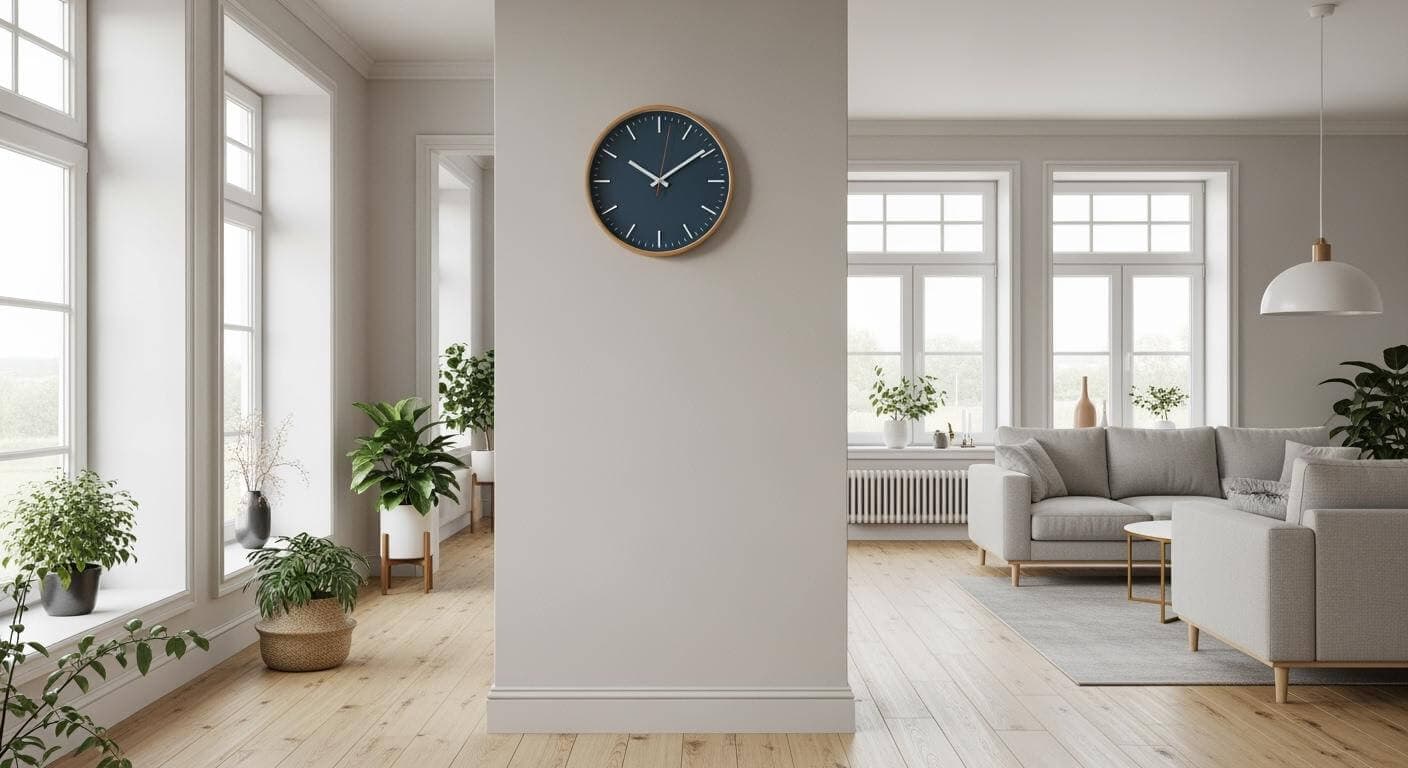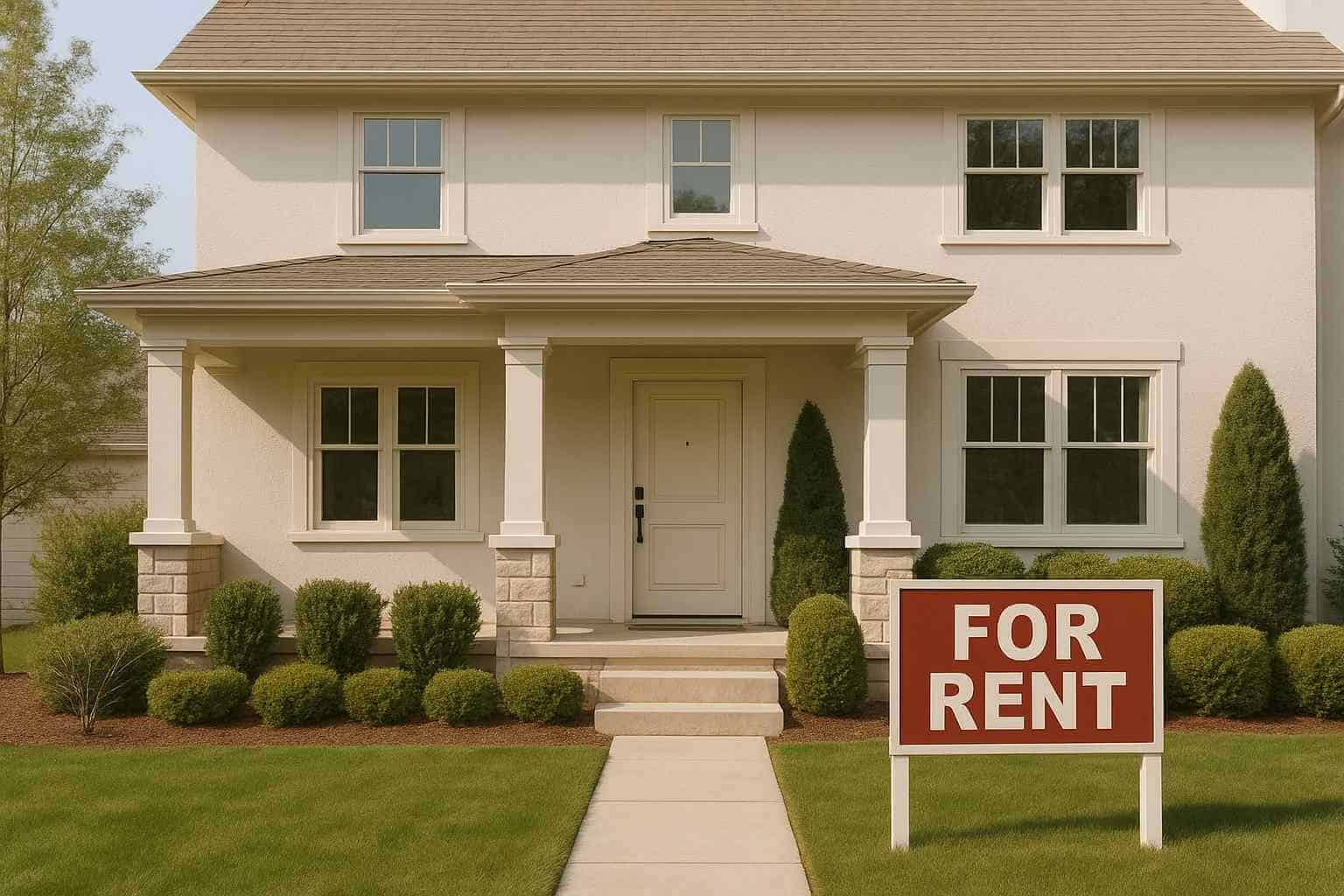Contemporary interior design has elevated the clock from simple timekeeping device to sophisticated design statement. Today’s homeowners recognize that a carefully selected timepiece can dramatically enhance any living space, serving as both functional necessity and captivating focal point. Modern clock designs span from sleek minimalist wall pieces to impressive grandfather clocks that anchor spacious rooms with commanding presence.
The transformation of clock aesthetics mirrors broader interior design evolution, where streamlined forms meet innovative materials and traditional craftsmanship blends with cutting-edge technology. Interior designers now strategically position timepieces as powerful elements for establishing mood and defining spatial character. Whether featuring contemporary digital displays or classic analog faces, modern clocks contribute substantially to room ambiance while fulfilling their essential timekeeping role.
Thoughtful integration with existing decor allows clocks to complement rather than overwhelm other design components. From industrial lofts showcasing oversized metal timepieces to minimalist spaces highlighting sculptural clock springs as decorative elements, these functional accessories have become essential components of sophisticated interior design approaches that seamlessly merge practicality with visual impact.
Statement pieces that define room character
Large-scale clocks have emerged as powerful architectural elements that instantly establish room personality and visual hierarchy. Oversized wall timepieces measuring three feet or more create dramatic focal points that draw the eye while anchoring entire seating arrangements or dining areas. These substantial clock designs work particularly well in open-concept spaces where traditional room divisions don’t exist, helping to define separate zones through strategic placement and scale.
Grandfather clocks continue to hold special appeal in contemporary settings, though modern interpretations often feature sleek cases in unexpected materials like brushed steel or reclaimed wood. The mechanical beauty of visible clock springs and pendulum movements adds kinetic interest that static wall art cannot provide. These floor-standing timepieces bring verticality to room compositions while their rhythmic ticking creates subtle ambient sound that many find comforting.
Industrial-style clocks with exposed gears and metal frameworks suit loft apartments and modern farmhouse interiors exceptionally well. Their raw mechanical appearance celebrates the inner workings that make timekeeping possible, turning functional components into decorative features. Materials like aged brass, blackened steel, and weathered copper add textural contrast against smooth wall surfaces. The positioning of statement timepieces requires careful consideration of sight lines and lighting conditions to maximize their visual impact.
Minimalist timepieces for clean contemporary spaces
Sleek, understated clock designs perfectly complement modern interior design philosophies that prioritize simplicity and uncluttered spaces. These refined timepieces feature clean geometric forms, neutral color palettes, and subtle materials that blend seamlessly with contemporary furnishings. Wall-mounted clocks with thin profiles and frameless designs virtually disappear into their surroundings while still providing functional timekeeping. This is why we for instance often see these clocks in Nordic design.
Scandinavian-inspired timepiece designs emphasize natural materials like light oak, birch, and maple combined with matte metal accents. These clocks often incorporate negative space as a design element, using minimal markings and slender hands that don’t compete with surrounding decor. The beauty lies in their restraint and precision, where every element serves both form and function without unnecessary ornamentation.
Digital clock displays integrated into smart home systems represent the cutting edge of minimalist timekeeping. These devices can appear and disappear on command, projecting time onto walls or surfaces only when needed. Some models feature ambient lighting that adjusts to room conditions, providing gentle illumination without disrupting the clean lines that define modern interior spaces.

Material innovation in contemporary clock design
Modern clock manufacturers have revolutionized timepiece construction by incorporating unconventional materials that push creative boundaries while maintaining precise functionality. Concrete clocks bring industrial sophistication to urban lofts, their raw texture creating striking contrast against polished surfaces and soft furnishings. These heavyweight timepieces often feature embedded LED lighting that illuminates numbers from within, creating dramatic shadow effects on surrounding walls.
Reclaimed wood clock designs celebrate sustainability while adding warmth to contemporary spaces. Craftsmen transform salvaged barn wood, driftwood, and vintage flooring into unique timepieces that tell stories beyond mere timekeeping. Each piece carries distinctive grain patterns, weathering marks, and color variations that make every clock genuinely one-of-a-kind. The natural imperfections become design features that soften the hard edges common in modern interior design.
Acrylic and glass clocks offer transparency that allows wall colors and textures to show through, creating layered visual effects that change throughout the day. These materials work exceptionally well in small spaces where traditional solid timepieces might feel overwhelming. Some designs incorporate colored glass or frosted surfaces that diffuse light beautifully, while others remain completely clear except for floating numerals that seem to hover in mid-air. Metal mesh and perforated steel clocks provide industrial appeal with surprising lightness, their open construction allowing glimpses of wall surfaces behind while casting intricate shadow patterns.
Also read – How to take your living room to the next level
Strategic placement and room integration techniques
Successful clock placement in modern interior design requires understanding how timepieces interact with existing furniture arrangements and architectural features. The height at which you mount a wall clock significantly impacts its visual weight and functionality within the space. Eye-level positioning works best for frequently consulted timepieces, while higher placement suits decorative clocks that serve primarily as design elements.
Kitchen clocks demand special consideration due to cooking activities and steam exposure. Positioning timepieces away from stovetops and dishwashers protects delicate clock springs and mechanisms while maintaining visibility during meal preparation. Many homeowners choose multiple smaller clocks rather than one large timepiece to ensure time visibility from various work zones.
Living room clock placement should complement seating arrangements and entertainment centers. Consider these key factors:
• Distance from primary seating for comfortable viewing
• Relationship to television screens and artwork
• Natural light sources that might create glare on clock faces
• Traffic flow patterns through the space
• Proportional scale relative to furniture pieces
Bedroom timepieces require balance between functionality and tranquility. Digital displays can disrupt sleep patterns, making analog clocks preferable for nighttime environments. Grandfather clocks work beautifully in master suites with sufficient floor space, their gentle ticking providing soothing ambient sound that many find relaxing.
Open-concept homes benefit from strategic timepiece positioning that helps define separate functional areas, creating visual rhythm that guides the eye naturally through connected spaces.
Modern homes have transformed the humble clock into sophisticated design elements that serve multiple purposes beyond simple timekeeping. Whether choosing an impressive grandfather clock as a room anchor or selecting sleek minimalist timepieces that blend seamlessly with contemporary decor, these functional accessories have become indispensable components of thoughtful interior design.
The diversity of materials, styles, and placement options available today allows homeowners to express personal taste while meeting practical needs. From industrial designs featuring exposed clock springs to transparent acrylic pieces that play with light and shadow, contemporary timepieces offer endless possibilities for creative expression. Smart integration with existing furniture and architectural features ensures that clocks enhance rather than compete with other design elements.
The key to successful timepiece integration lies in understanding how scale, materials, and positioning work together to create cohesive interior spaces. Large statement clocks command attention and define room character, while subtle designs support overall design themes without overwhelming other elements. Strategic placement considerations ensure optimal functionality while maximizing visual impact, making every timepiece a valuable contributor to the home’s overall design narrative and daily living experience.
Andrea Bianchi is a passionate interior designer and renowned blogger who seamlessly blends creativity with functionality to create beautiful, harmonious spaces. With a background in design and a love for aesthetics, Andrea has built a reputation for her unique ability to transform ordinary interiors into extraordinary living environments. Her blog serves as a platform where she shares her insights, tips, and inspirations, offering readers a glimpse into the latest trends in interior design. Whether she’s working on a high-end residential project or crafting content for her blog, Andrea’s work reflects her commitment to elegance, comfort, and timeless design.


